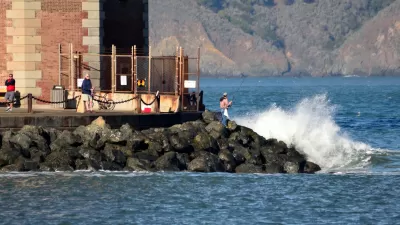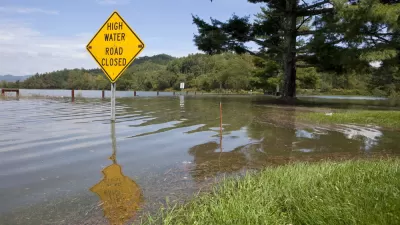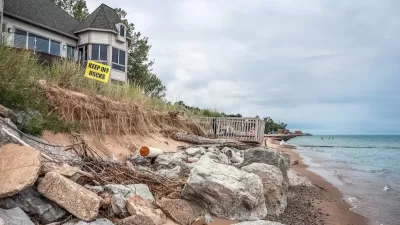Zillow has released research on how many of the nation's homes may be underwater (literally) by the year 2100. Florida, Hawaii, New Jersey, and Louisiana are at the highest risk.

In an attempt to quantify the effect of climate change on housing supply, Zillow has compiled data on how many structures will likely be in danger by the year 2100, if not sooner.
Krishna Rao writes, "To quantify the impact of rising sea levels, we used maps released by the National Oceanic and Atmospheric Administration (NOAA) showing which parts of coastal states will be underwater if sea levels rise by six feet. Why six feet? Some estimates suggest sea levels will rise that much by the year 2100 if climate change continues unchecked."
"Nationwide, almost 1.9 million homes (or roughly 2 percent of all U.S. homes) – worth a combined $882 billion – are at risk of being underwater by 2100. And in some states, the fraction of properties at risk of being underwater is alarmingly high." The coastal homes at risk are worth significantly more than the American average: about $300,000 to the average $187,000.
The article includes a sobering chart showing estimates of how many properties may be affected by 2100, their combined value on the current market, and what fraction of the state's total housing stock they represent. There are also maps of individual cities with potentially flooded areas marked in blue.
FULL STORY: Climate Change and Housing: Will a Rising Tide Sink all Homes?

Alabama: Trump Terminates Settlements for Black Communities Harmed By Raw Sewage
Trump deemed the landmark civil rights agreement “illegal DEI and environmental justice policy.”

Planetizen Federal Action Tracker
A weekly monitor of how Trump’s orders and actions are impacting planners and planning in America.

Why Should We Subsidize Public Transportation?
Many public transit agencies face financial stress due to rising costs, declining fare revenue, and declining subsidies. Transit advocates must provide a strong business case for increasing public transit funding.

Understanding Road Diets
An explainer from Momentum highlights the advantages of reducing vehicle lanes in favor of more bike, transit, and pedestrian infrastructure.

New California Law Regulates Warehouse Pollution
A new law tightens building and emissions regulations for large distribution warehouses to mitigate air pollution and traffic in surrounding communities.

Phoenix Announces Opening Date for Light Rail Extension
The South Central extension will connect South Phoenix to downtown and other major hubs starting on June 7.
Urban Design for Planners 1: Software Tools
This six-course series explores essential urban design concepts using open source software and equips planners with the tools they need to participate fully in the urban design process.
Planning for Universal Design
Learn the tools for implementing Universal Design in planning regulations.
Caltrans
Smith Gee Studio
Institute for Housing and Urban Development Studies (IHS)
City of Grandview
Harvard GSD Executive Education
Toledo-Lucas County Plan Commissions
Salt Lake City
NYU Wagner Graduate School of Public Service





























